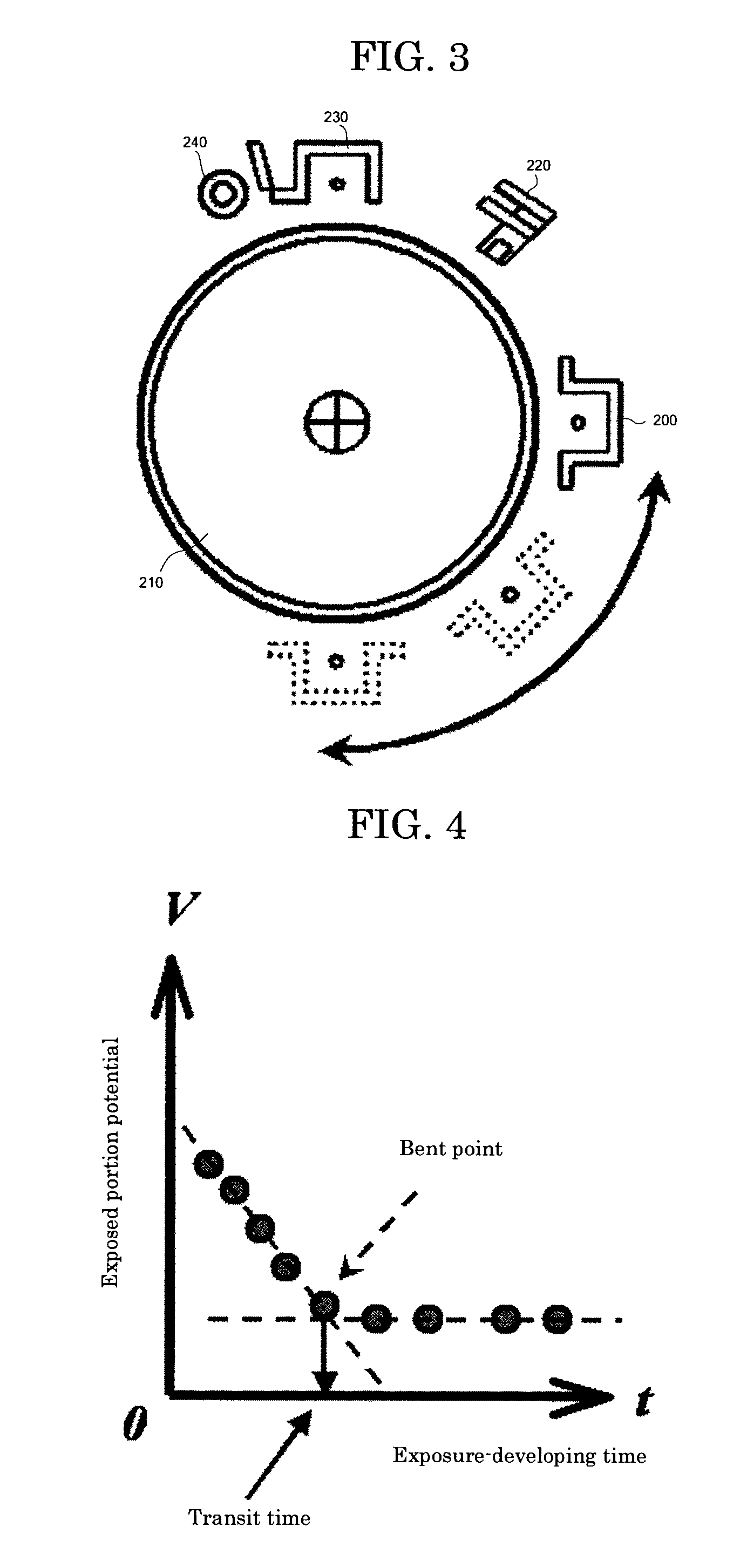Image forming apparatus and image forming process
- Summary
- Abstract
- Description
- Claims
- Application Information
AI Technical Summary
Benefits of technology
Problems solved by technology
Method used
Image
Examples
embodiments
[0211]In FIG. 16, one example of an image forming apparatus of the present invention is shown as Embodiment B-1. The image forming apparatus in FIG. 16 is a full-color image forming apparatus (of four colors) according to an electrophotographic system, and the figure is a longitudinally cross-sectional view schematically showing the schematic structure thereof. Examples of the image forming apparatus include a printer, a copier and a facsimile.
[0212]The image forming apparatus in the figure is provided with a color image forming unit which forms color images (images of colors except black), and a black image forming unit which forms black images, including drum-shaped electrophotographic photoconductors (hereinafter referred to as “photoconductors”) (301) and (310) respectively. Amongst these photoconductors, the photoconductor (301) (first photoconductor) is for forming color images, and the photoconductor (310) (second photoconductor) is for forming black images. Note that hereina...
examples
[0427]Hereinafter, the present invention will be further described referring to specific Examples, however, the present invention is not limited to the following Examples. Note that the following unit term of “part” or “parts” respectively means “part by mass” or “parts by mass”.
[0428]First, the method of synthesizing an azo pigment and a titanylphthalocyanine crystal will be described. The azo pigments used in the following Examples were prepared according to the method described in Japanese Patent Application Laid-Open (JP-A) No. 60-29109 and Japanese Patent (JP-B) No. 3026645. The titanylphthalocyanine crystal used in the following Examples was prepared according to the method described in Japanese Patent (JP-B) No. 2004-83859.
—Synthesis of Titanylphthalocyanine Crystal—
synthesis example a-1
[0429]A pigment was produced according to the Example 1 described in Japanese Patent Application Laid-Open (JP-A) No. 2004-83859.
[0430]Specifically, 292 g of 1,3-diiminoisoindline and 1,800 parts of sulfolane were mixed, and 20.4 g of titanium tetrabutoxide was delivered by drops into the mixture in a nitrogen gas stream. Upon completion of the dropping, the temperature of the mixture was gradually increased to 180° C. and then stirred and reacted for 5 hours while keeping the reaction temperature from 170° C. to 180° C. After completion of the reaction, the reactant was naturally cooled, and the precipitate was filtered and the filtrated precipitate was washed until the powder of the precipitate turned into blue by chloroform. Next, the powder was washed with methanol several times and further washed with 80° C. hot water several times and then dried to obtain a coarse titanylphthalocyanine. The coarse titanylphthalocyanine was dissolved in 20 times its volume of a sulfuric acid, a...
PUM
 Login to View More
Login to View More Abstract
Description
Claims
Application Information
 Login to View More
Login to View More - R&D
- Intellectual Property
- Life Sciences
- Materials
- Tech Scout
- Unparalleled Data Quality
- Higher Quality Content
- 60% Fewer Hallucinations
Browse by: Latest US Patents, China's latest patents, Technical Efficacy Thesaurus, Application Domain, Technology Topic, Popular Technical Reports.
© 2025 PatSnap. All rights reserved.Legal|Privacy policy|Modern Slavery Act Transparency Statement|Sitemap|About US| Contact US: help@patsnap.com



